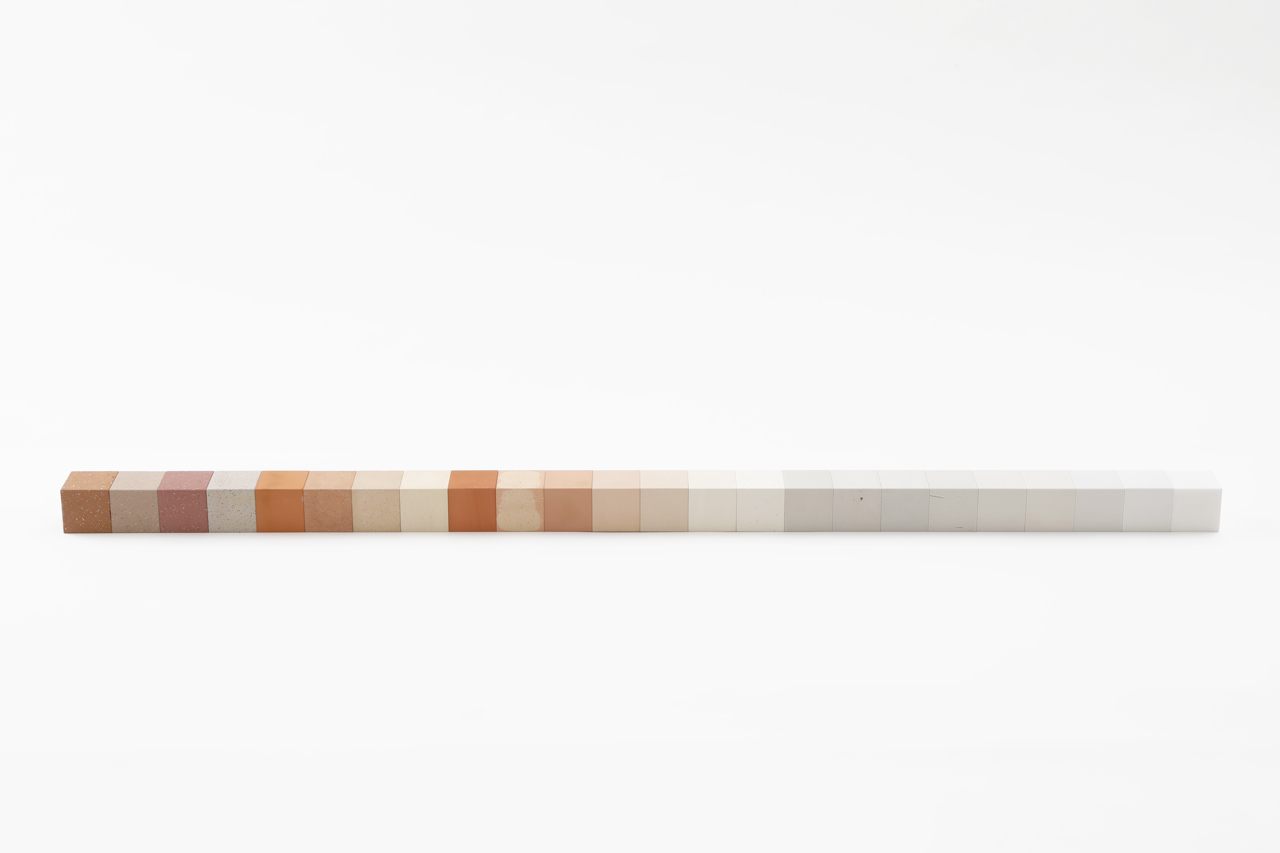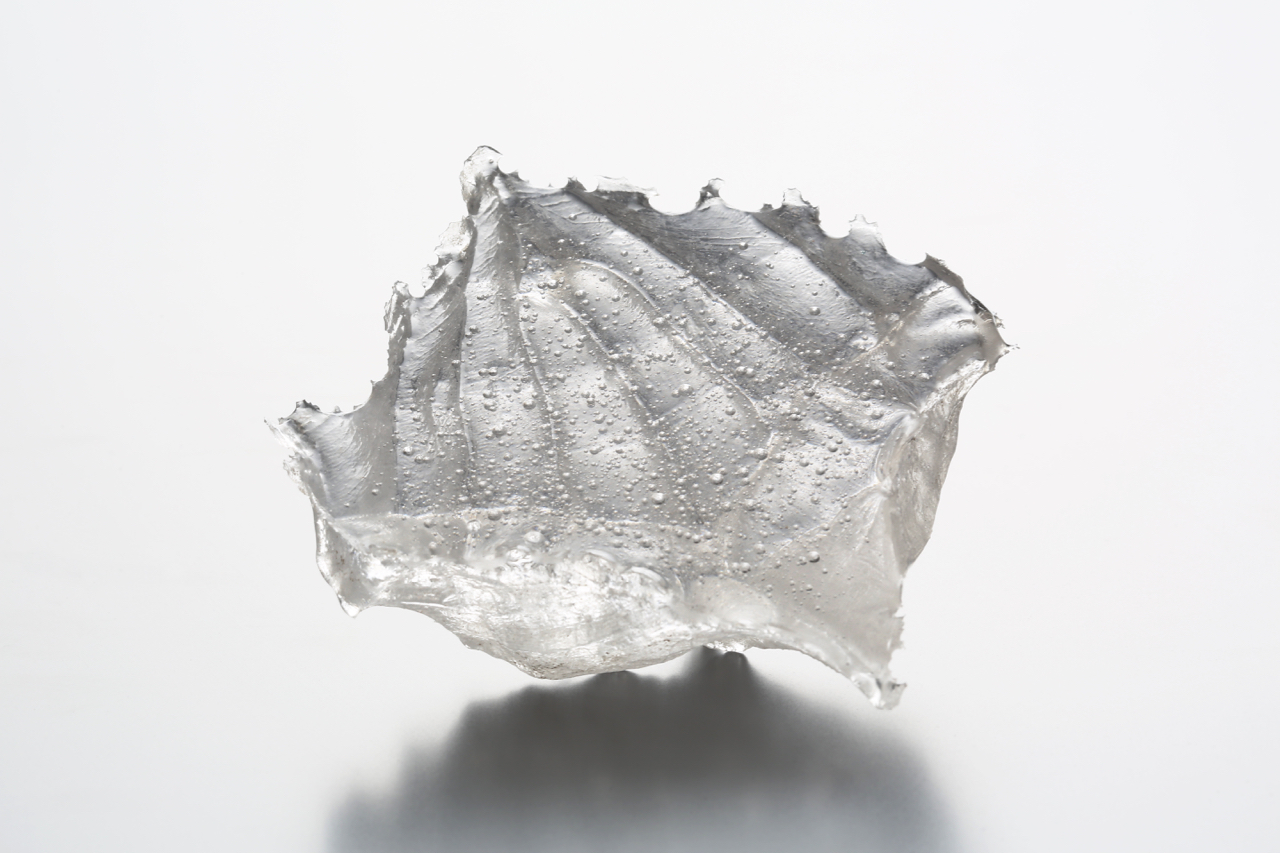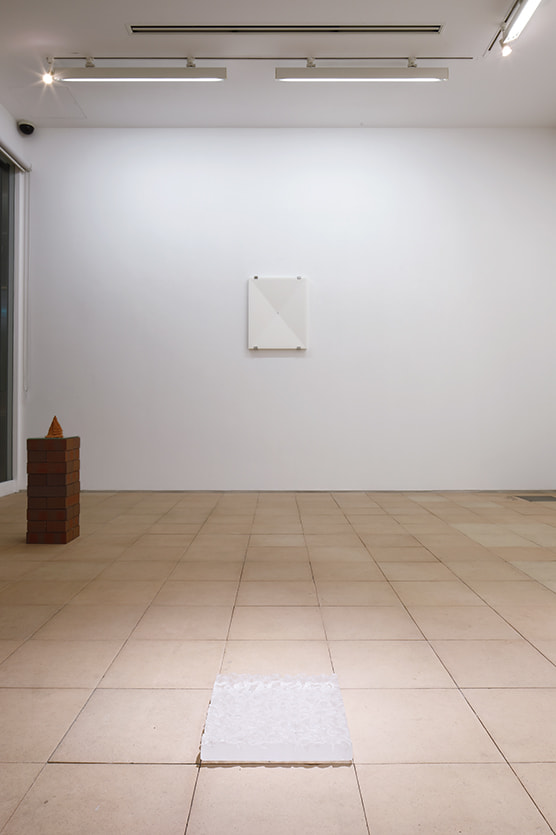Imura art gallery is pleased to announce "SHIN/EN," a solo exhibition by artist Jumpei Ueda, who explores the potential of Japanese yakimono ceramics in art through diverse forms of artistic expression.
Questioning the cultural and historical assumptions that inform conventional yakimono, as well as the concept, decoration, functionality, and uses of vessels (utsuwa), Ueda’s perspective leads to the creation of art that focuses on how these are related to one another.
The artist won the Gotoh Cultural Award for best new talent in 2010, taking up a residency in Mexico the same year, arranged by the Gotoh Memorial Foundation (now The Tokyu Foundation). This exhibition consists mainly of works that Ueda included in a presentation of the fruits of his study in Mexico at Yokohama Civic Art Gallery in January 2019, with the support of the foundation.
Ueda explains that, during his research, contact with archaeological artifacts that demonstrated the climate, culture, and ancient civilizations of Mexico made him think about the changes that have taken place within the Japanese yakimono tradition that has taken form and been passed down over the centuries, and about the connections between civilization, technology, and art.
Noticing a quadrangle in the shape that was formed by the surface of water in his hands after scooping up some water, Ueda focused on the quadrilateral pattern as a way of grasping the links between human activity from primordial times to the present. He has since incorporated such patterns as elements in his art.
A major change that occurred after this residency was the addition of brick, tile, and fine ceramics*1 as materials in his art, in addition to the conventional ceramic materials he had used up to that point. He selected brick, the oldest architectural material in the world; fine ceramics, the latest technology in the history of yakimono; and tiles (Awaji tiles*2), which developed and continue to evolve under the influence of the Japanese climate. These materials brought their individual cultural backgrounds and physical properties to his work, providing textures and coloring that enable unique forms of artistic expression.
The exhibition space at imura art gallery, which has a characteristic brick floor, allows the viewer to notice the overlap between yakimono as art and yakimono functioning in modern life, as well as the overlap between the rich coloring of the art and the exhibition space.
Employing this diversity of yakimono, the exhibition attempts to provide a visualization of human activity—from the initial discovery of laws and principles to the present day—and of the relationship between activity, matter, and time, creating a coherent experience for viewers.
*1 Fine ceramics
Fine ceramics are part of the category of ceramics that includes glass and conventional ceramics such as porcelain and earthenware. They use highly refined materials and are manufactured to precise specifications to meet advanced performance and functionality requirements. Fine ceramics are widely used for components in automobiles, smartphones, and other products.
*2 Awaji tiles
One of the three main types of tiles in Japan, Awaji tiles are manufactured on Awaji Island in Hyogo Prefecture. They are made from high-quality clay unique to Awaji Island, and consist mainly of ibushi gawara (smoked tiles), which are smoked during manufacture so as to form a layer of carbon on their surface. They are known for their beautiful, fine-grained finish.
この度イムラアートギャラリーは、芸術における「やきもの」の可能性を探求し、多様な表現を展開する上田順平の個展「シン/エン」を開催致します。
上田は、これまで「やきもの」が背負う文化や歴史、「うつわ」という概念、装飾と機能および用途に対しての問いから、それらの関係性に着目した作品を制作してきました。
2010年には、「五島記念文化賞美術新人賞」を受け、同年より(旧)五島記念文化財団、(現)東急財団の研究員としてメキシコに滞在しました。本展は、(旧)五島記念文化財団の助成を受け、本年1月に横浜市民ギャラリーにて開催された海外研修成果発表展での作品を中心に構成されます。
上田は、研修期間中に、メキシコの風土や文化、古代文明を伝える考古学資料に触れたことにより、長い時間の中で紡ぎ出され受け継がれてきた「やきもの」の変遷や、文明と技術と芸術の接点について考えるようになったと言います。
そして、水をすくう動作から生まれた掌のなかの水面の形に四角形を見たことから、原初から現在までのヒトの営為を繋ぐ手がかりとして四角形という図形に注目し、作品の要素としました。
一方、研修後の大きな変化として、これまで素材としてきた陶磁器に加え、レンガ、瓦、*1ファインセラミックスを作品素材に用いるようになりました。
世界最古の建築資材の一つであるレンガと、焼き物の歴史の最先端に位置するファインセラミックス、そして、日本の風土から生み出され育まれ続ける瓦*2(淡路瓦)、それぞれが持つ文化的背景や物質の特色から作品素材として選択され、それらの焼き物だけが持つ材質感と色彩による表現を提示します。
イムラアートギャラリーの展示スペースは特徴的なレンガ床を呈しており、作品としてのやきものと現代生活の中で機能する焼き物の在り方や、作品と展示空間の豊かな色彩の重なりにもご着目いただけます。
本展では、これらの多様な「やきもの」を用いて、「最初の理の発見から今日までのヒトの営為と物質と時間の関係」を可視化し、観者の中に一つの体験を生み出すことを試みます。
*1ファインセラミックス
ファインセラミックスは、ガラスや陶磁器などの仲間であり、その中でも精製された原料を用いて作られた高精密・高機能なセラミックスを指します。自動車やスマートフォン等の部品として幅広く用いられています。
*2淡路瓦
淡路瓦は、日本三大瓦の一つであり兵庫県淡路島で制作されています。淡路島特有の良質な土から作られ、煙で燻す事で表面に炭素の膜をつくる「いぶし瓦」を主体とします。粒子が細かく美しい仕上がりが特徴です。




